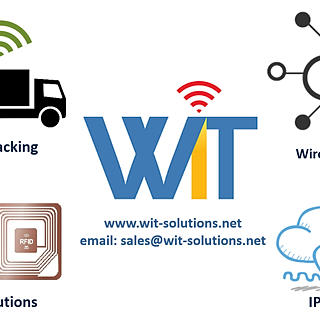Visual Simultaneous Localization and Mapping (Visual SLAM): A Deep Dive
- wit-tech
- Jul 10
- 3 min read
n a world increasingly driven by autonomous systems—drones, self-driving cars, and augmented reality—one concept plays a pivotal role: Simultaneous Localization and Mapping, or SLAM. Among its variants, Visual SLAM (vSLAM) stands out due to its reliance on cameras, which are lightweight, inexpensive, and information-rich. But what is Visual SLAM, and why is it essential for modern robotics and computer vision?
What Is SLAM?
At its core, SLAM is the computational problem of constructing or updating a map of an unknown environment while simultaneously keeping track of an agent's location within it. Think of a robot navigating a building it has never seen before: it must map the building and track its own movement at the same time.
The Visual SLAM Advantage
Visual SLAM uses cameras—either monocular (single), stereo (dual), or RGB-D (color + depth)—to perceive the environment. Compared to traditional sensors like LiDAR, cameras are more cost-effective and provide rich contextual data, including texture and color.
Key Components of Visual SLAM
Feature Extraction & MatchingThe first step in vSLAM is detecting distinctive points (features) in camera images. Algorithms like ORB, SIFT, or SURF extract these features, which are then matched across frames to estimate movement.
Pose EstimationOnce features are matched, Visual SLAM estimates the camera’s movement (translation and rotation) using geometric methods like epipolar geometry and PnP (Perspective-n-Point) solving.
Map BuildingAs the camera moves, it reconstructs the 3D positions of the tracked features in space. This evolving map helps the system understand its environment.
Loop Closure DetectionTo reduce drift (gradual error accumulation), Visual SLAM systems detect when the camera revisits a known place—this is called loop closure. It triggers global optimization to correct accumulated errors.
Optimization (Graph-Based SLAM)All poses and map points are refined using optimization techniques like bundle adjustment or pose graph optimization, enhancing the accuracy of localization and mapping.
Visual SLAM in Action
Visual SLAM is crucial for:
Autonomous Vehicles: Cars use vSLAM for real-time mapping and navigation, especially in GPS-denied environments.
Augmented & Virtual Reality: Headsets and smartphones use vSLAM to anchor digital objects in the real world.
Drones & Robotics: Drones use vSLAM to fly autonomously indoors or through forests where GPS is unreliable.
Challenges in Visual SLAM
Despite its benefits, Visual SLAM comes with challenges:
Lighting Conditions: Cameras are sensitive to lighting, which affects feature detection.
Dynamic Environments: Moving objects (like people or cars) can confuse the system.
Computational Load: Real-time processing requires powerful hardware and efficient algorithms.
Notable vSLAM Systems
ORB-SLAM: A popular open-source system known for its robustness and accuracy.
LSD-SLAM: Uses semi-dense depth maps and works with monocular cameras.
RTAB-Map: Designed for real-time operation on robots with RGB-D cameras.
The Future of Visual SLAM
As AI and hardware improve, Visual SLAM is becoming more robust and accessible. Integration with deep learning allows better feature understanding, scene recognition, and even semantic mapping. It’s expected that future SLAM systems will not just build geometric maps but also understand their semantic context—like identifying furniture, doors, and human activity.
In Summary:Visual SLAM is revolutionizing how machines perceive and navigate the world. From autonomous vehicles to immersive AR, it's a foundational technology that blends computer vision, geometry, and robotics. As research continues, we can expect even smarter, more aware systems that truly "see" and understand the world around them.







Comments